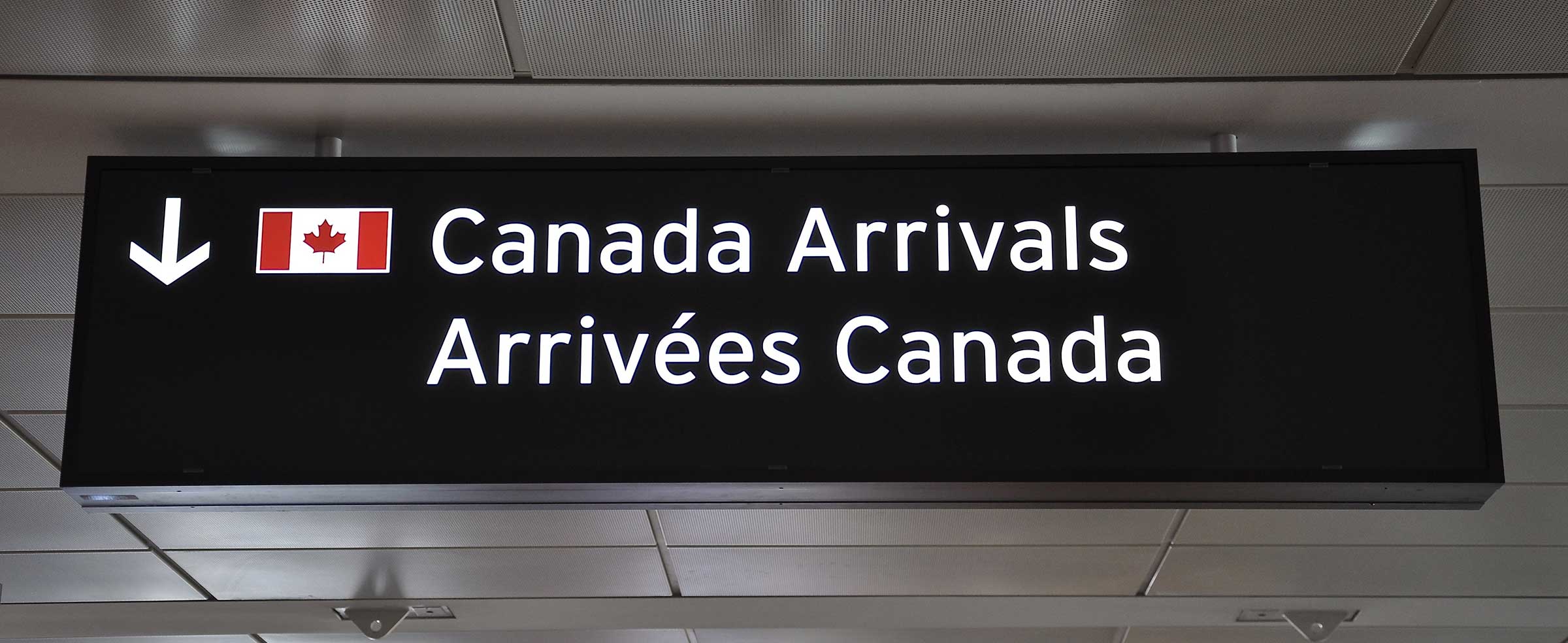What Canada can teach the US about immigration?

America is deeply divided on issues related to immigrants and refugees, while in Canada, which accepts larger proportions of newcomers, there is a general consensus in the country over the issue. Canadians are broadly accepting of large numbers of immigrants and positive about playing an active role in resettling refugees. Even newly elected Ontario Progressive Conservative leader Doug Ford’s anti-elitism shies away from xenophobia. Why are policies and attitudes more open and less polarized in Canada, and can America learn anything from its northern neighbour?
The two countries’ divergence reflects their distinct geography, history, demographics and public policies.![]()
Canada’s reception of unauthorized immigrants is limited by its geography: it is surrounded by three oceans and it has a single neighbour. In contrast, the US receives more land and water crossings, and unauthorized entries stoke public concern.
Canada’s history — which began as a complex and sometimes lurching process of attempted domination and subsequent accommodation between French and British settlers — has made the country more multinational in character than most.
These “bi-national” foundations, along with failed efforts to forcibly assimilate Indigenous peoples (a project of cultural genocide according to many, including former chief justice of Canada’s Supreme Court Beverley McLachlin), have given rise to a contemporary political culture that does not assume a single group can dominate. Accommodation and compromise have shaped Canada’s approach to newcomers. Furthermore, Canada’s stronger social safety net helps to attenuate the effects of economic change, which probably softens potential intergroup resentments.
While Canada does have (as does the US), a history of shameful episodes (racist policies, wartime internment of Japanese, refusal of Jewish refugees in the 1930s), it gradually developed policies that encouraged immigrants to become citizens and to fully participate in society.
The critical framework that developed in Canada in the 1950s was integration (the “cultural mosaic”), as opposed to assimilation (the “melting pot” in the US); integration was envisioned as a voluntary and cooperative process. Immigrants were expected to learn English or French, and to work, study or otherwise interact with people of other groups. The state committed to establishing a context of fairness and acceptance. This framework persisted as immigration grew more diverse in the late 1960s after the laws were changed to favour those with education and skills rather than European ancestry.
Subsequent policies further elaborated on this integration approach. In the 1970s, dual citizenship was recognized, and multiculturalism acknowledged distinct cultural identities as social goods, not barriers to integration.
In the 1980s, the Charter of Rights and Freedoms provided a framework for balancing competing rights, and helped to establish the degree of accommodation for religious and other minorities. Employment equity initiatives supported the economic participation of marginalized groups.
Overall, a higher percentage of Canada’s population are immigrants, 21.9 percent (2016), compared with 13.5 percent in the US. In 2015, the US admitted 1.4 million immigrants — about 0.4 percent of its population, roughly half of the Canadian rate.
For both countries, Europe is no longer the main source region for immigrants. In Canada, the top source region is Asia (62 percent), in the US it is the Americas (52 percent). About 60 percent of Canada’s immigrants are selected based on skills, compared with 14 percent in the US (64 percent of US immigrants are family-sponsored). In the US, sponsoring relatives (“chain migration”) has become a hot button issue; in Canada, “family reunification” is relatively uncontroversial.
The US has a slightly higher percentage who enter as refugees: 14 percent, compared with 11 percent for Canada. But unauthorized immigrants are the bigger difference. America has an estimated 11.4 million (3 percent of the population), whereas Canada’s rate is about 0.3 percent.
Canadian governments of all stripes have supported immigration, believing it benefits Canada. Since most immigrants (85 percent) become citizens, all parties work to attract their votes. Foreign-born citizens form 20 percent or more of the electorate in 144 of Canada’s 338 electoral areas, making it virtually impossible to win an election on an anti-immigration platform. In the last federal election, 46 foreign-born candidates were elected to Parliament.
Canada’s Minister of Immigration, Refugees and Citizenship comes from Somalia, its Minister of National Defence comes from India.
What might the United States learn from Canada? First, accept immigrants with skills and education that will benefit the American economy, but recognize that they need support to thrive and contribute. Allow immigrants to sponsor close relatives. Fund programs to help newcomers learn English and find employment. Encourage immigrants to become citizens, allow dual citizenship, and encourage new citizens to vote and become legislators who articulate the needs of their communities. One day, one of their children may become president of the great republic.
Andrew Griffith is an author, commentator and blogger. He has worked for various government departments in Canada and abroad, and is a Fellow of the Canadian Global Affairs Institute and the Environics Institute. Michael Adams is President and Founder of the Environics Institute for Survey Research.
Like what you're reading? With our bi-monthly e-newsletter, you can receive even more with the latest details on current projects, news, and events at the institute.
Subscribe